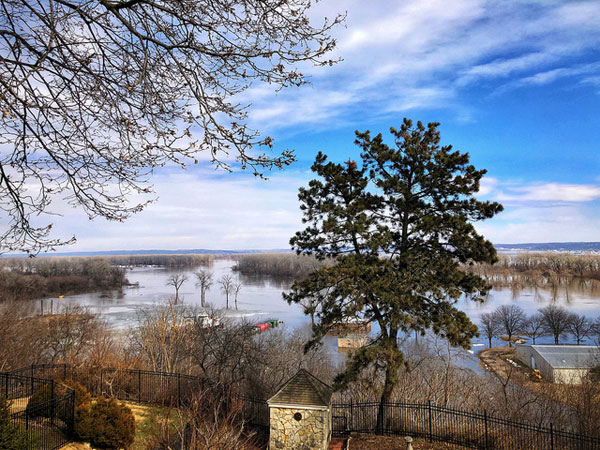
March 28, 2019; Bloomberg and New York Times
Last week, Bloomberg reported that the Rockefeller Foundation may be axing its Resilient Cities program, started only in 2013. The program is designed to help cities address the effects of climate change including by establishing response systems that are well thought through even in the face of incidents which are virtually unprecedented. According to Bloomberg, the effort may be closed as soon as this summer. While the article sardonically bore the label “climate changed,” Bloomberg’s Christopher Flavelle points out just how a large of a gap remains:
The potential shift comes as US cities face increasing pressure from climate change, especially following a string of major natural disasters over the past two years. And it would coincide with a pullback in climate adaptation work by the Trump administration, which has reversed policies designed to prepare communities for global warming.
Meanwhile, there is no clear roadmap, no precise model for many of the bigger crisis-fed decisions individuals and organizations are often forced to make in the absence of protocols and built-response systems of localities. A disaster comes along, and there’s no time to scratch heads and set up an exploration committee. It’s often said that the needs of many people are more important than the needs of just a few, but that does not provide comfort in the face of hard choices; it just adds another piece to the weight of deciding who loses in the race to hold back a wall of water.
A storm called a “bomb cyclone” hit the Midwest on March 15th, with pouring rain falling on frozen, snow-covered ground. The rain and runoff flooded parts of Missouri, Iowa, Kansas, and Nebraska, raising the level of Little Sioux River 16 feet in 24 hours and covering a third of the Offutt US Air Force Base near Omaha. Winds blew at hurricane strength, gusting over 100 mph in places. Colorado registered its lowest barometric pressure in history. The Spencer Dam gave way to the Niobrara River, a tributary of the Missouri, which flows through Wyoming and Nebraska. The Gavins Point Dam in South Dakota began to strain as the reservoir it contains filled.
John Remus, the chief of the Army Corps of Engineers’ Missouri River Basin Water Management Division, is the one who manages the six major dams along 2,000 miles of waterways, most of which were built before concerns of climate change. After the Dust Bowl era in the 1930s and subsequent flooding, Congress determined that dams would solve the problems. Included in land that was submerged by new dams was 350,000 acres belonged to Native Americans. The Yankton Sioux, who did not provide consent, were paid $23 million for 2,851 acres in 2002 for the taking of their land, with some acres still in contention. The country got hydroelectric power and cheap farmland. Those dams have aged considerably since.
Here was the decision Remus faced: Should he take the risk that Gavins Point, a major dam not designed for such conditions, would hold the Missouri River at flood stage? Or, instead, should he open the spillway to ease the pressure—flooding homes, farmland, and towns?
Sign up for our free newsletters
Subscribe to NPQ's newsletters to have our top stories delivered directly to your inbox.
By signing up, you agree to our privacy policy and terms of use, and to receive messages from NPQ and our partners.
“It’s human nature to think we are masters of our environment, the lords of creation,” Remus says. But, as he said, there are limits, and the storm last week that caused him so much trouble was beyond what his network of dams could control.
Remus’s decisions are guided by the Master Manual, which lists his eight purposes as authorized by Congress: “Flood control, river navigation, hydroelectric power, irrigation, water supply, water quality, recreation (such as fishing or boating), and the preservation of endangered species” without prioritizing them. Remus notes that the Engineer Corps had not incorporated climate change in planning. “Scientists say that, in the Missouri Basin, we’ll be spending more time at each end of the spectrum—longer and more severe floods, longer and more severe droughts,” Remus said, and this year, he had “nothing but bad options.”
Remus ordered the spillways open, and 100,000 cubic feet of water per second poured through. The speed of the water matched that of Niagara Falls.
When the bomb cyclone was doing its damage and topping levees, the sheriff in Bartlett, Iowa, decided to order an evacuation. Homeowner David Lueth ignored the order, though he knew river water was coming. He had lived through a flood and a levee failure in 2011 and spent his life savings to restore his land. After that storm eight years ago, Remus tried to convince the local board to move the levees. They were unwilling to spend the massive amount of money it would take for complete replacement and just shifted the levees back a bit. Following the 2011 storm, the Corps was accused of placing a higher priority on wildlife than controlling flooding. A federal judge agreed last year.
Lueth has gone from sadness to anger, questioning the effort to save Garvins Point Dam while sacrificing those downstream. Lueth’s house was a victim of the flooding this month. And new crisis decisions may be on the horizon for Remus; spring rains are right around the corner.
Meanwhile, the Bloomberg reporter speculates that the elimination of the Resilient Cities program may be the result of a change in top leadership at the Rockefeller Foundation.—Marian Conway and Ruth McCambridge













